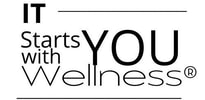2.3 (M) Challenges
How to Deal with Challenges as they Arise:
Always know that when a challenging situation comes up, you can remove yourself for a moment, and breathe. Try to remain as relaxed as possible through the situation. An anxious mind doesn’t think very clearly, so a great start is remaining as calm as you can.
From here, you can better analyze the situation. Ask yourself “How am I handling this?” “Can I do better?”
Sometimes there are situations that will keep us in a constant state of anxiety, such as a stressful job, and we can feel trapped. NO job is worth extreme stress and anxiety. Sometimes we are even made to feel like certain situations are always our fault, as in the case of abuse. Know that NO abusive partner is worth the aggravations. (These are two situations where speaking to a therapist can be very helpful.)
Remember that we ALL have challenges. NOBODY is immune. Some people are just very good at hiding it well.
Training the Mind
So we know that relaxing through a difficult situation can be helpful, but how can we train the mind to learn how to help ourselves? Well, we know that when a difficult situation arises, the stress levels rise, and we become tense. So, by simply placing ourselves in a similar atmosphere, we can take steps to practice relaxing through it, so when an actual situation occurs, we can be better prepared to deal with it.
The best way to create this, is through physical means. So, think of a pose, or a movement of the body that creates tension, and makes us feel uncomfortable. Think of a balance pose. Think of holding your hands up in the air for a minute or so, until your arms feel very uncomfortable, and then bring your focus to your shoulders. Breathe in, and as you exhale, bring your full attention to your shoulders, and feel the shoulders relax. By doing this, you are bringing the focus away from the discomfort, (bad feeling), and into relaxation (good feeling). This can take some practice. What you will start to recognize is that when you bring the focus to your shoulders, the "bad feeling" lessens, and can even disappear. We can train our mind to seek relaxation and a "good" feeling, even when it seems we should be feeling "bad".
This next exercise will show you a way you can help train your mind to focus away from the discomfort and into relaxation. The more focus we give the discomfort, the more it may blossom. Notice what happens when you practice this exercise, and make notes in your journal. Once this exercise becomes too "easy", start to think of other exercises that you can do to enhance a "discomfort", that you can practice relaxing through.
Always know that when a challenging situation comes up, you can remove yourself for a moment, and breathe. Try to remain as relaxed as possible through the situation. An anxious mind doesn’t think very clearly, so a great start is remaining as calm as you can.
From here, you can better analyze the situation. Ask yourself “How am I handling this?” “Can I do better?”
Sometimes there are situations that will keep us in a constant state of anxiety, such as a stressful job, and we can feel trapped. NO job is worth extreme stress and anxiety. Sometimes we are even made to feel like certain situations are always our fault, as in the case of abuse. Know that NO abusive partner is worth the aggravations. (These are two situations where speaking to a therapist can be very helpful.)
Remember that we ALL have challenges. NOBODY is immune. Some people are just very good at hiding it well.
Training the Mind
So we know that relaxing through a difficult situation can be helpful, but how can we train the mind to learn how to help ourselves? Well, we know that when a difficult situation arises, the stress levels rise, and we become tense. So, by simply placing ourselves in a similar atmosphere, we can take steps to practice relaxing through it, so when an actual situation occurs, we can be better prepared to deal with it.
The best way to create this, is through physical means. So, think of a pose, or a movement of the body that creates tension, and makes us feel uncomfortable. Think of a balance pose. Think of holding your hands up in the air for a minute or so, until your arms feel very uncomfortable, and then bring your focus to your shoulders. Breathe in, and as you exhale, bring your full attention to your shoulders, and feel the shoulders relax. By doing this, you are bringing the focus away from the discomfort, (bad feeling), and into relaxation (good feeling). This can take some practice. What you will start to recognize is that when you bring the focus to your shoulders, the "bad feeling" lessens, and can even disappear. We can train our mind to seek relaxation and a "good" feeling, even when it seems we should be feeling "bad".
This next exercise will show you a way you can help train your mind to focus away from the discomfort and into relaxation. The more focus we give the discomfort, the more it may blossom. Notice what happens when you practice this exercise, and make notes in your journal. Once this exercise becomes too "easy", start to think of other exercises that you can do to enhance a "discomfort", that you can practice relaxing through.
